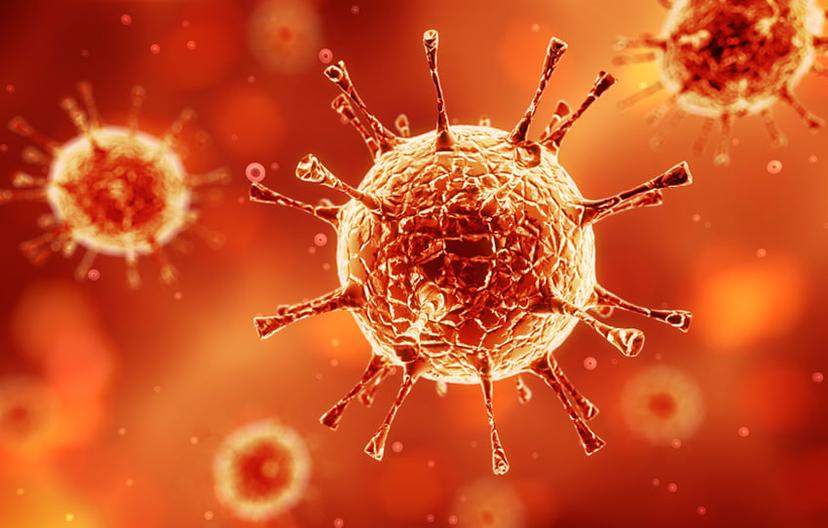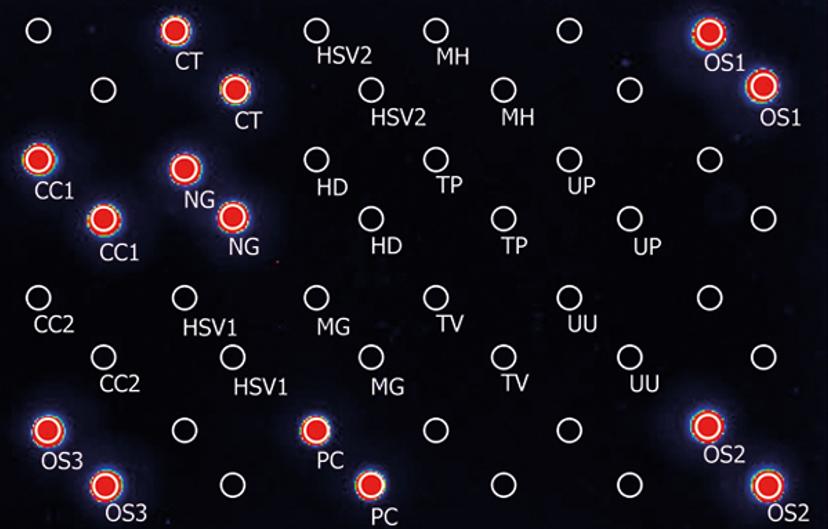Simultaneous Detection of 11 STI Pathogens by DNA Microarray
Article written by EUROIMMUN
1 May 2017

Image of a virus
Shutterstock: Microbiology-Virus-Peshkova
Eleven sexually transmitted infections (STIs) can be directly detected in parallel in one reaction, using a novel DNA microarray. The test parameters comprise Chlamydia trachomatis, Neisseria gonorrhoeae, Mycoplasma genitalium, Mycoplasma hominis, Ureaplasma urealyticum, Ureaplasma parvum, Haemophilus ducreyi, Treponema pallidum, Trichomonas vaginalis and herpes simplex viruses 1 and 2.
STI overview
More than one million STIs are acquired worldwide every day, according to the World Health Organisation. If left untreated, STIs can lead to serious sequelae, especially infertility, fetal damage during pregnancy, and severe postnatal infections in newborns. The risk of acquiring or transmitting HIV is, moreover, increased in persons infected with STIs such as syphilis, chancroid and herpes.
STIs are challenging to diagnose, as they are often asymptomatic. Many STI cases are only identified after irreversible damage has already occurred. Multiple infections with different pathogens can also occur, further complicating the diagnosis. However, once identified, the most common STIs such as chlaymdia, gonorrhoea, syphilis and trichomoniasis can be cured with antibiotics, while HSV infections can be modulated through antiviral therapy. Due to the increasing spread of STIs, some countries have introduced screening programs, e.g. for chlamydia and gonorrhoea, especially in young people in whom infections are most prevalent. STI testing is, moreover, an important preventative medical examination in pregnant women and immunosuppressed patients, for example HIV patients. Sexual partners of infected persons should always be tested and treated at the same time.
Important STI pathogens
Chlamydia trachomatis infection with serotypes D to K is one of the most common STIs, with 131 million new infections worldwide per year. Other serotypes are L1, L2 and L3, which cause lymphogranuloma venereum, and A, B and C, which infect the eyes causing trachoma and blindness.
Neisseria gonorrhoeae causes gonorrhoea, a worldwide distributed disease with 78 million new infections per year.
Treponema pallidumcauses syphilis, a widely distributed, chronic cyclic infectious disease. 5.6 million new infections occur worldwide per year. Untreated syphilis is responsible for one in four stillbirths and 14% of newborn deaths worldwide.
Mycoplasma and Ureaplasma are distributed worldwide and comprise different species. Ureaplasma urealyticum and Ureaplasma parvum have an estimated prevalence in the sexually active population of 40-80% in women and 5-20% in men. Mycoplasma hominis has a prevalence of 20-50% and Mycoplasma genitalium of 1-3%.
Haemophilis ducreyicauses ulcua molle, also known as chancroid, which occurs predominantly in tropical regions in Africa, South-East Asia and Latin America. It manifests with single or multiple soft genital ulcers, which are usually painful.
Herpes simplex virus 1 (HSV-1) and herpes simplex virus 2 (HSV-2) are distributed worldwide. It is assumed that 70-90% of the population becomes infected with HSV-1 and 7-20% with HSV-2 during their lifetime. Facial and lip herpes is generally caused by HSV-1, while genital herpes is caused predominantly by HSV-2 but also by HSV-1. More than 500 million people worldwide are living with genital herpes infection.
Trichomonas vaginalis is a parasitic protozoan which causes trichomoniasis. Around 143 million people become infected worldwide per year.
Laboratory diagnostics of STIs
PCR-based direct pathogen detection allows identification of both manifest and silent infections, and is thus suitable for diagnosis of symptomatic patients as well as for general screening. It offers a huge time advantage over cultivation and is especially useful for detecting pathogens that are difficult or impossible to cultivate, e.g. Chlamydia trachomatis, Mycoplasma, Ureaplasma, Treponema pallidum. Due to amplification of the pathogen DNA, infections with a reduced pathogen number can also be reliably detected.
A broad screening of STI pathogens is particularly important in asymptomatic or clinically ambiguous cases and for detecting multiple infections, which are often missed during single parameter testing. Microarray technology provides an ideal platform for simultaneous direct detection of a wide range of relevant pathogens.
DNA microarray with 11 parameters
The DNA microarray for direct detection of eleven STI pathogens, is based on proven EUROArray technology. The detection is highly sensitive and specific due to the meticulously designed primers.

Figure 1: The EUROArray procedure
In the procedure (Figure 1), specific sections of pathogen DNA from patient samples are amplified and fluorescently labeled in one multiplex polymerase chain reaction (PCR). The PCR products are then hybridized to biochip microarray slides containing immobilized complementary DNA probes and detected by their fluorescence signals (Figure 2). Integrated controls verify correct performance of the test and absence of PCR contamination. The evaluation, interpretation and archiving of results is fully automated and thus highly standardized and objective. A detailed result report is produced for each patient.
A human papillomavirus (HPV) microarray based on the same technology, which detects and types all thirty relevant high- and low-risk HPV subtypes, can be performed in parallel if required.

Figure 2: EUROArray results for STI pathogen detection
Microarray specifications and evaluation
The lower detection limit of the microarray analysis is 10-100 DNA copies per reaction depending on the pathogen. Template DNA in concentrations ranging from the lower detection limit to two million copies, can be used in the PCR without any cross reactions with probes from other pathogens. Moreover, cross reactivity with 28 further anogenital microorganisms has been excluded experimentally.
In an evaluation study, 325 swab samples and 134 urine samples were analyzed with the EUROArray. There was a good agreement with the precharacterisation. Additionally, in many cases pathogens that were not included in the precharacterisation were detected. The additional findings were verified by further independent tests. Thus, the microarray provides reliable results and exceptionally broad screening capabilities.
